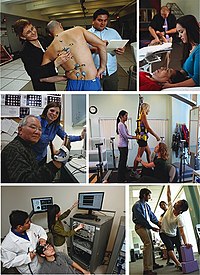
Photo from wikipedia
BACKGROUND Professional musical performance requires static postures and repetitive movements that may cause musculoskeletal problems in performers. Elite pianists are especially at risk for these disorders, which may cause discomfort… Click to show full abstract
BACKGROUND Professional musical performance requires static postures and repetitive movements that may cause musculoskeletal problems in performers. Elite pianists are especially at risk for these disorders, which may cause discomfort but also affect their work. The objective of this study was to describe the most frequent musculoskeletal problems observed in pianists, and to explore the influence of these disorders on their professional activities from the perspective of the pianists themselves. METHODS Musculoskeletal problems were defined in accordance with the International Classification of Diseases (ICD-10), and an analysis was conducted of medical records of 183 professional pianists held by a performing arts clinic (Terrassa, Spain). In addition, in-depth interviews were conducted with 20 pianists (6 students, 12 teachers, and 2 performers), followed by content analysis of the transcripts to explore musicians' perceptions. RESULTS We identified a total of 20 different problems, which principally involved the upper body (arms and back). Regardless of occupation or age, all respondents reported having musculoskeletal problems and that these impacted on their professional activity. Interviewees also identified a lack of support or advice on how to prevent these problems. CONCLUSION Musculoskeletal problems, principally those involving the upper body, are very common among pianists and affect their professional activity. It is necessary to include risk prevention information starting in the early stages of musicians' training programs.
Journal Title: Medical problems of performing artists
Year Published: 2017
Link to full text (if available)
Share on Social Media: Sign Up to like & get
recommendations!